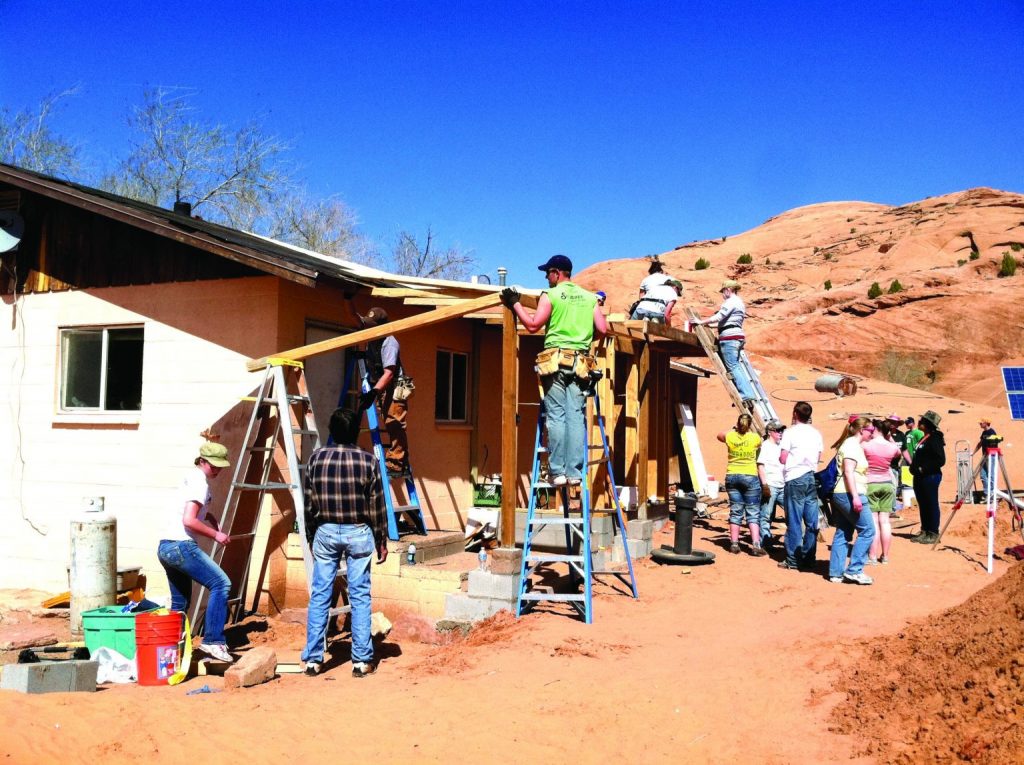SUN Center’s alternative Spring Break

This archived article was written by: Hailey Evans
Spring Breakaway is not only a great opportunity to serve, but a great opportunity to experience the Navajo culture first hand. The SUN Center takes a group of about 50 students every year to serve on a Southeastern Utah reservation. These students dedicate their spring break to help improve the health and living conditions of the local Navajo people.
Most of these Navajo residents live in places with no electricity, phone services or water. This year, the group is determined to actually build a home on top of a foundation that has been previously laid. Along with this, they plan to install septic systems, water lines, plant orchards, fix fencing and do trail repair. In the past, they also installed a cell tower, which they plan to make small repairs on this trip. They have also installed handicap ramps and porch awnings for shade, said SUN Center Director Terry Johnson.
Because of the amount of students that signed up, they plan to split into two groups: one going to Navajo Mountain and the other to Navajo Canyon.
For many of the volunteers, it is a shock when they realize they have to actually “rough it” in this desolate area. They not only have to camp in tents, but they share one shower with about 30 people, which is something that is not ideal for most.
Johnson reported that the students leave on a Sunday, and most of them come home on Friday, but because there is so much work to do, often times, students will stay an extra couple of days, dedicating an entire week to this project.
Hawk, a local native, has been the guide for this group in the past. After four-long days of hard work, the students are given an opportunity to be exposed to the rich Navajo culture. Hawk and his wife, Francis, teach the volunteers how to make authentic Navajo bread. Hawk has a rich love for his heritage and culture that he loves to share with the students.
Next year, Johnson hopes to expand the program, which will inevitably allow more students to participate. This expansion, however, will demand that at least two more faculty members attend. This is something that has been planned to be worked out over the next year, he said.




